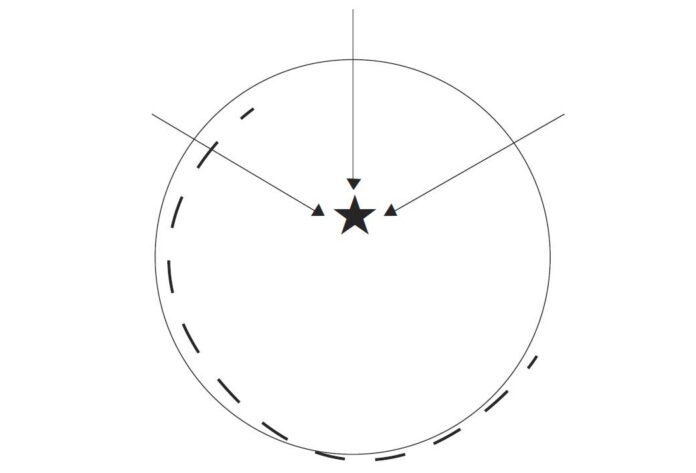Underlying Theories of Acupuncture Treatment (31) How To Apply Pivot Points
Applying Pivot Points to symptoms should be used differently for fullness and emptiness symptoms.
By Brandon SJ Oh, L.Ac.
We often discover that pain is located in the joints as we practice. If the pain is located on a meridian, it is easier to treat it. But in the case of joint pain is usually distributed on multiple meridians, or the pain is found in places where no related meridian pathway. For the case, forget meridian and focus on treating the painful area using Pivot Points.
Definition of Pivot Point Application
If pain is located on multiple meridians passing, find a symmetrical location where the other side of the body and insert a needle. The acupuncture points could work for drainage of the pathogen, which causes pain.
Inserting needles where the patient complains of pain could work, but it can potentially create more pain by the needle insertion because the pain area is a battleground for our immune system to expel pathogens. Adding needles on the battleground could act adding more pathogens even the patient feels better temporarily. From an Asian medicinal point of view, if needles are added where inflammation is in the process, which could be understood as adding more healthy qi, the healthy qi could be converted to a pathogen especially, the pathogen has greater power than healthy qis in the body.
The best solution to resolve the pain for the cases is to drain the pathogen from the painful area to the exact opposite and the other side of the body to weaken the strength of the pathogen. Specific acupuncture points that drain pathogen are called Pivot Points(軸穴), which make a meridian balance by controlling pathogen on the other side.
Theory to Treat the Ankle Sprain/Spraint By Applying the Pivot Point.
There are two ways to apply Pivot Points to take sprain/spraint. First, you have to diagnose the cause of the symptom was caused by fullness or emptiness. Assuming that the patient’s symptom was caused by fullness, take one of the most appropriate Expelling Acupuncture Point on the opposite side of the pain. But if a patient feels fatigued after the symptom starts, first use one of the Harmonizing Point on the opposite side of the pain, then insert the second needle on one of the Expelling Point on the same side as a Pivot Point.
If a pathogen seems too strong, insert a needle on the side where the symptom does not appear to prevent qi movement to the pain area and convert from a healthy qi to a pathogen. Then perform acupuncture treatment by sedating the pathogen where it is taking place. Usually, insert three needles to sedate the pathogen directly. The procedure helps sedate the pathogen and prevents more healthy qi from coming to the pain area and being converted to the pathogen. Keep in mind that no more than three needles are needed to sedate. Too many needles in the pain area cancel out the Pivot Point’s benefits.
Using the Pivot Point could be compared to putting a spoon in boiling soup. As everyone expired, as soon as you put a spoon in a boiling hot bowl of soup, the temperature tends to drop rapidly. Inserting needles on the painful area could work as a spoon in a boiling hot soup bowl. But the needles work more efficiently when used with the Pivot Point.
Procedure To Apply the Pivot Point
The ankle sprain/spraint is common in an acupuncture clinic. I will explain how to treat the symptom by applying the Pivot Point. Meridian theory could be applied, but it is only a factor to be considered. Because ways to apply the Pivot Point is more like using local acupuncture points taking then meridian theory. To select the Pivot Point, first, you have to diagnose the cause of the symptom. Because if the cause is due to fullness and the patient complaints severe pain, the Pivot Point should be one of the Expelling Points on the other side of the painful area.
The technique to apply the Pivot Point is to insert a needle on the other side of the painful area and keep turning the needle until the needle stops due to resistance of the muscle fiber. The patient feels the pain of the needle manipulation then stops turning it.
Assuming that the cause of the symptom is emptiness or the patient’s vitality is seemed weak, applying the Expelling Point as the Pivot Point results faint. For the case, use the Harmonizing Point located on the other side of the painful part to stabilize qi movement, then insert the second needle on the Expelling Point as the Pivot Point. Finally, apply three needles that have the purpose of draining pathogens from the painful part of the body as you insert three needles where the patient’s complaint should be different from the location. If the pain is located on the Yang meridian, insert three needles on the Yang meridian. Then insert one more needle on the other side of a yin meridian to help qi move to the next qi movement sequence on meridians. If the pain is located on the yin meridian, put one needle on the other side’s yang meridian, then insert three needles on the yin meridian where the pain is found.
I explained how to fix the ankle sprain/spraint by applying the Pivot Point, and it could also be applied to treat wrist spraint/sprain.
They’re also a tip for one who has trouble treating sprain/spraint. Insert needles where a patient feels most pain and use the SoJuel acupuncture point of Master Tong’s on the other side of the painful ankle.

































